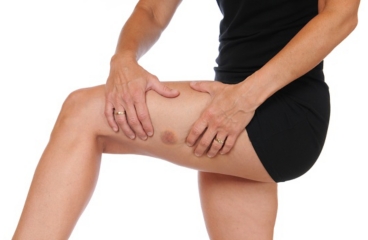
Overview
Contusion is the medical term for a bruise. It is the result of a direct blow or an impact, such as a fall. Contusions are common sports injuries.
Most people think of a bruise as a black-and-blue spot. This happens when small blood vessels get torn and leak blood under the skin. But bones, muscles, and organs can also get bruised. This may damage deep tissues but not cause a bruise you can see.
The doctor will do a physical exam to find the location of your contusion. You may also have tests to make sure you do not have a more serious injury, such as a broken bone or nerve damage. These may include X-rays or other imaging tests like a CT scan or MRI.
Deep-tissue contusions may cause pain and swelling. But if there is no serious damage, they will often get better in a few weeks with home treatment.
The doctor has checked you carefully, but problems can develop later. If you notice any problems or new symptoms, get medical treatment right away.
Follow-up care is a key part of your treatment and safety. Be sure to make and go to all appointments, and call your doctor if you are having problems. It's also a good idea to know your test results and keep a list of the medicines you take.
How can you care for yourself at home?
- Put ice or a cold pack on the sore area for 10 to 20 minutes at a time to stop swelling. Put a thin cloth between the ice pack and your skin.
- Be safe with medicines. Read and follow all instructions on the label.
- If the doctor gave you a prescription medicine for pain, take it as prescribed.
- If you are not taking a prescription pain medicine, ask your doctor if you can take an over-the-counter medicine.
- If you can, prop up the sore area on pillows as much as possible for the next few days. Try to keep the sore area above the level of your heart.
When should you call for help?
Call your doctor now or seek immediate medical care if:
- Your pain gets worse.
- You have new or worse swelling.
- You have tingling, weakness, or numbness in the area near the contusion.
- The area near the contusion is cold or pale.
Watch closely for changes in your health, and be sure to contact your doctor if:
- You do not get better as expected.
Where can you learn more?
Go to http://www.healthwise.net/patientEd
Enter H828 in the search box to learn more about "Contusion: Care Instructions".
Current as of: July 31, 2024
Author: Ignite Healthwise, LLC Staff
Clinical Review Board
All Ignite Healthwise, LLC education is reviewed by a team that includes physicians, nurses, advanced practitioners, registered dieticians, and other healthcare professionals.

